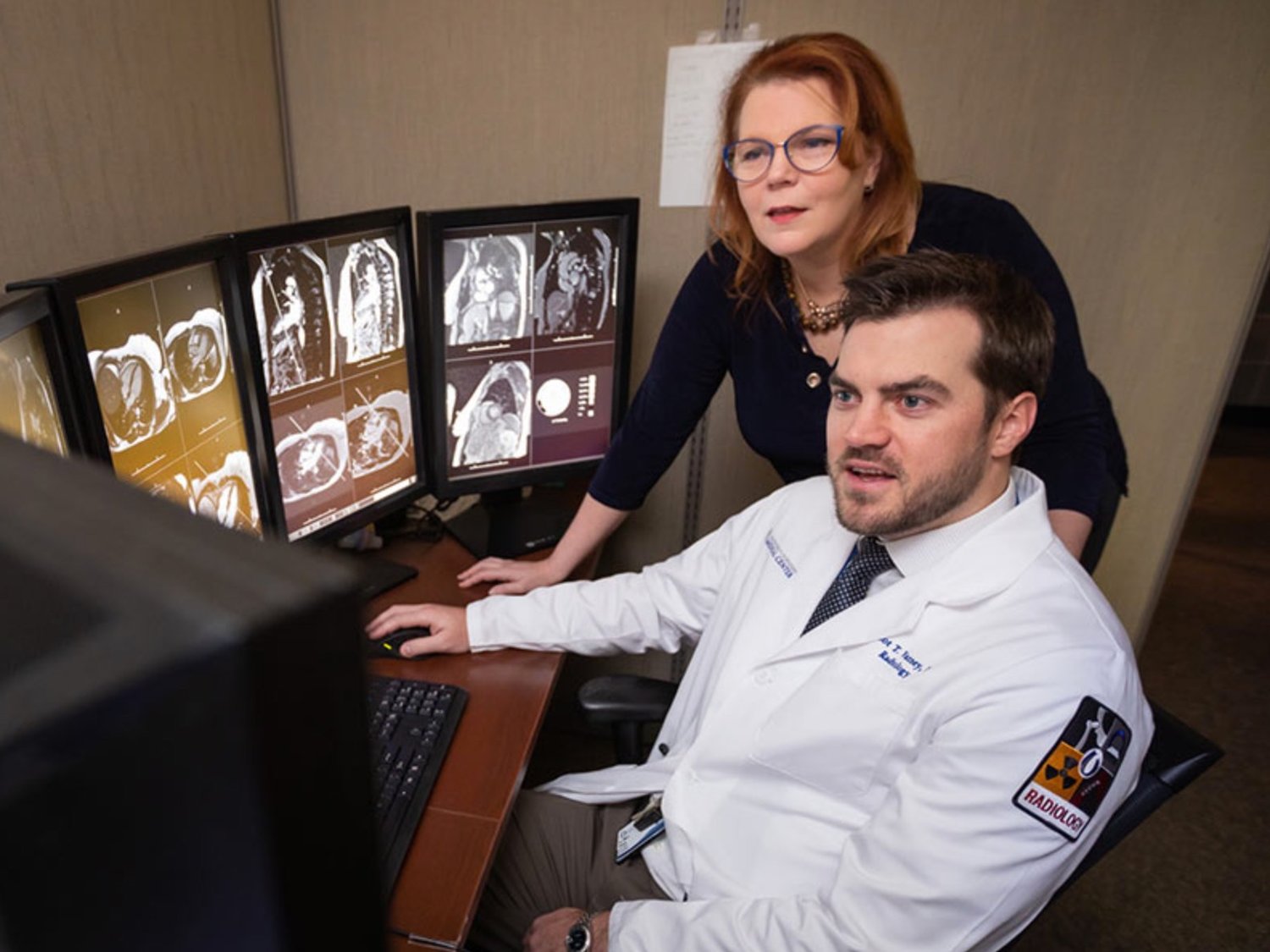New doctorate program resonates with radiologists
When he was a medical student deciding where to train as a specialist, Dr. Elliot Varney of Madison had his eye on Texas, but his heart in Mississippi.
A 2019 graduate of the School of Medicine at the University of Mississippi Medical Center, Varney was determined to do his residency in radiology, but hoped, at the same time, to earn his Ph.D. in radiology research, an option not available at UMMC then.
"I wanted to stay at UMMC," said Varney, who grew up in the Gluckstadt/Madison area near Jackson, "because of my relationships here – the personal ones, but also the ones with the faculty and the ones I had throughout medical school.
"But I had interviewed at the University of Texas at San Antonio, which had the only radiology residency/Ph.D. program in the country."
In mid-December, that changed, and Varney is now the first-ever trainee in a new program at UMMC: the Biomedical Imaging/Bioengineering Ph.D. track.
"When we started the program, I thought he was the perfect inaugural candidate for it," said Dr. Candace Howard-Claudio, associate professor of radiology, vice chair of research in radiology and director of the new program.
Varney of Ridgeland is a "known entity in the department," said Dr. Timothy McCowan, professor and chair of radiology. "He was one of our top choices for our residency program. This is a great fit for him and for us."
Varney is now fusing his training in radiology – the use of radiation, including X-rays and ultrasound, to diagnose and treat disease – with research: He is exploring the applications of biomedical imaging/engineering in the cause of helping doctors, therapists and others develop ways and equipment to better serve their patients.
Radiology is also wielded to treat and/or uncover liver and kidney problems, heart disease, back pain and more.
"At one time, I had thought I would do surgery, but I became interested in radiology and imaging," he said, meaning such technologies as MRI and CT. "So this program was a no-brainer choice."
The choice had existed before, but not officially, or at least formally, said Dr. Richard Summers, associate vice chancellor for research and Billy S. Guyton Professor of Emergency Medicine.
As a faculty member, Smith gave radiology residents an opportunity to do additional years in of research in their specialty. "But there was no formal degree attached to it," Summers said.
Dr. Kevin Zand was the first to do perform such research, which he finished recently before joining the University of California, San Francisco, in the Department of Radiology and Biomedical Engineering as a clinical fellow.
But Dr. Howard-Claudio is responsible for integrating a formal Ph.D. program into radiology, Summers said. "Through her, it's even more substantial now; it has legs and I have great hopes for it."
Those hopes lie in the potential of the Biomedical Imaging/Bioengineering track – the second track in Biomedical Sciences Ph.D. program, which had a pathology track in place already. In fact, Varney set out on that track in August before switching to the new one after its official approval in December.
That approval came about after Howard-Claudio discussed it with Summers and Dr. Joey Granger, Billy S. Guyton Distinguished Professor and dean of the School of Graduate Studies in the Health Sciences.
"Dr. Howard has done a fantastic job," McCowan said. "This program goes beyond radiology because, in order for it to be successful, it will require the collaboration of other departments, such as neurology or biostatistics, depending on the trainees' research."
Of course, as a research program, also falls into the realm of the Office of Research and Sponsored Programs, and the School of Graduate Studies in the Health Sciences, as noted by Granger.
"We believe it will significantly add to our growing pipeline of programs to enhance clinical investigation at UMMC," Granger said.
As McCowan put it: "This is good for our department and for our institution."
The price of achieving greater competitiveness is an extra year or two tacked onto the radiology residency, which is normally five years. Candidates for the degree will set out on the Holman Research Pathway, a model that ensures the program meets certain standards, and one supported by the American Board of Radiology.



